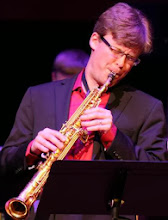When I first started writing with my right hand (I'm lifelong lefty), the biggest challenge was figuring out how to hold the pen, and how to control the basic movements. The results were totally illegible! It took some slow and disciplined practice, writing individual letters on a grid. The hardest work seemed to be making symmetrical curves and decent circles.
Daily practice has really paid off. In a matter of weeks, my "wrong-handed" handwriting has become neater than my old writing. It is slower, but slowing down has changed the way I think about writing. I suspect that it is even changing the creative process. I was thinking this morning about how different handwriting is from typing on a computer. The writing itself becomes a creative process . . . an improvisation! Things go wrong, letters come out unexpectedly, and the ink doesn't always flow the same way. Lines appear thicker, or thinner. All this is happening while a different part of the brain is controlling the content of the writing. I'm starting to wonder if there are differences in that content, depending on which hand is being used.
Cursive capital letters have proved to be the most difficult for me, and I've even had some challenges figuring out what style of letters to use. Capital F is particularly interesting, and I'm starting to find that the style of letter depends upon the context itself, and that the decision comes intuitively, in the moment. Cursive is a lot like jazz!
This process has reminded me of two very important points. First, you can teach yourself to do just about anything, provided that you are willing to put in the time. The secondary takeaway is more of a reminder that processes that are slow and thoughtful tend to become more personal. Computers are wonderful at making things fast and easy, but there is value to be found in doing things by hand, and that includes the ancient art of writing.


